By Richard L. Hayes
Many people have heard of the six American Curtiss P-40 Tomahawk fighters that actually got off the ground and contested the Japanese attack on Pearl Harbor, December 7, 1941. Some know about the 11 Boeing B-17 Flying Fortress bombers winging toward Pearl Harbor from California unarmed and out of gas. A few are aware of the six obsolete Curtiss P-36 Hawk that were able to take off. However, almost no one knows the story of 18 Douglas SBD Dauntless dive-bombers from the aircraft carrier Enterprise that arrived over Pearl Harbor simultaneously with the Japanese. These were the planes of Scouting Squadron Six.
Three U.S. aircraft carriers were operating in the Pacific that day. The Saratoga (CV3) was being overhauled in San Diego. The Lexington (CV2) had just left Pearl Harbor to deliver 18 Vought SB2U Vindicator dive bombers to Midway. The Enterprise (CV6) was just returning from a similar delivery of 12 Grumman F4F Wildcats to Wake Island. She was due back at Pearl on December 6. Fortunately, a storm loomed, so Halsey reduced speed and the ship did not actually reach port until the 8th.
Halsey knew war was imminent. Drills had been conducted regularly over the past few months, the most recent on November 27. When Halsey was given his orders to reinforce Wake, he had deliberately asked, “How far do you want me to go?”
Admiral Husband E. Kimmel, commander of the U.S. Pacific Fleet, replied, “Use your own common sense.”
That was all Halsey needed to hear. In his famous “Battle Order Number One,” the first item read, “The Enterprise is now operating under war conditions.” When his operations officer challenged this order, Halsey replied, “I’ll take [responsibility]. If anything gets in the way, we’ll shoot first and argue afterwards.” He intended to bomb anything on the sea and shoot down anything in the sky.
It was ironic. Unlike the rest of the Navy on December 7, the Enterprise fliers saw the enemy first. Their guns were loaded. Their crews were trained. But still, like everyone else, they did not quite expect an attack at home. They were looking for submarines. When they arrived, they thought the smoke was from burning sugar cane fields. They thought the shell fire was just a drill. They thought the stacks of green aircraft belonged to the Army. Only when they saw the antiaircraft blossoms over Pearl did they realize the truth.
Both the Japanese and American forces had launched aircraft at first light. At 0615 on December 7, the Japanese carriers sent their first attack wave aloft 250 miles north-northwest of Oahu. At exactly the same moment, the Enterprise launched what was thought to be a routine patrol directly in front of the ship’s advance. As usual, the patrol would search a hemisphere of 180 degrees directly ahead of the task force. The flight consisted of nine pairs of SBD-2 Dauntless dive-bombers, mostly from Scout Squadron Six, but including a few planes from Bomb Squadron Six. Each pair of aircraft would conduct a zigzag search in an arc 150 miles long and approximately 10 degrees wide. Instead of returning to the ship, they would then continue on to land at Ford Island, thus getting a jump on shore leave.
At 0645, the destroyer USS Ward fired on and sank a Japanese midget submarine operating within the defensive perimeter of Pearl Harbor. Seventeen minutes later, the Army radar station at Opana Point picked up the first wave of Japanese attackers. Thirteen minutes later, the second Japanese wave was launched. At 0748, Kaneohe Airfield was strafed and bombed. At 0752, Lt. Cmdr. Mitsuo Fuchida, tactical commander of the first wave, sent the message, “Tora, Tora, Tora,” meaning that surprise had been achieved. At the same time Scouting Six planes began to arrive over Oahu.
To maintain radio silence, Halsey had not informed Pearl Harbor his location or of his reconnaissance patrol. When news of the attack reached him, his first thought was, “My God, they’re shooting at my own boys!”
One of the first two-plane sections to arrive was aircraft 6-S-16, piloted by Frank A. Patriarca with a gunner named DeLuca, and 6-S-15, piloted by Ensign W.M. Willis with gunner Fred J. Ducolon. They almost made it to Ford Island. The two had passed Barbers Point, rounded Ewa Field, and were actually lining up on their landing approach when the attack began. They noticed the antiaircraft fire, but it was not until a Japanese Aichi “Val” dive-bomber winged over and flashed the rising sun insignia that Patriarca knew something was very wrong. At the same instant, tracers began whizzing past his plane.
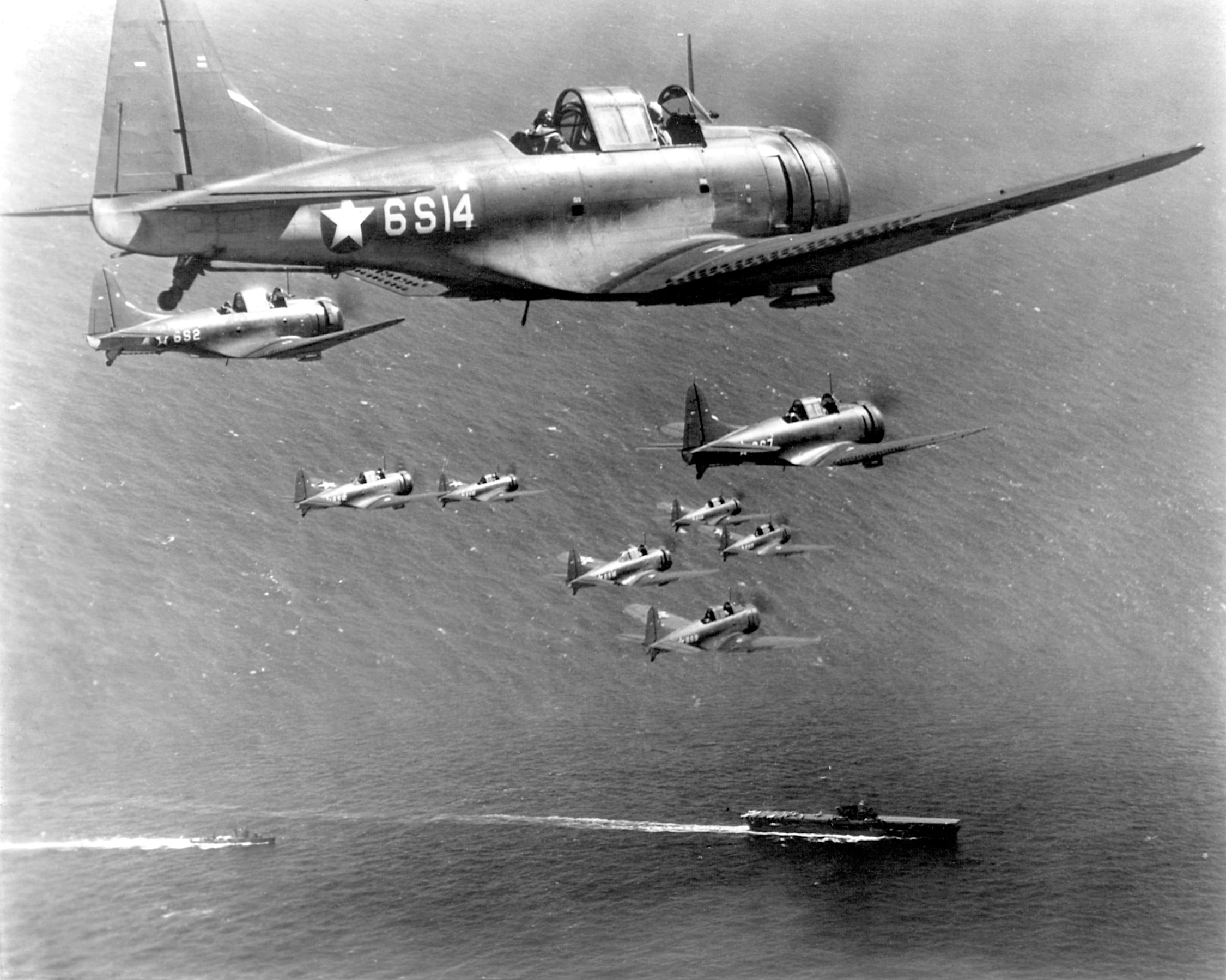
Immediately, Patriarca opened throttle, diving back toward the coast. He had decided to try and make it all the way back to the Enterprise when he realized he was alone. After searching for 6-S-15, his fuel was low, so he landed at Burns Field on Kauai. Willis and Ducolon were never found, although Mitsubishi Zero fighters led by Lieutenant Masaji Suganami from the carrier Soryu would later claim three SBDs.
After Sending His Final Message, “Do not fire. We are American Aircraft” No Trace of Gonzalez was Ever Found
At about the same time, S-B-3 and S-B-12 approached Pearl Harbor. Ensign Manuel Gonzalez and gunner Leonard J. Kozelek were in S-B-3, and S-B-12 was piloted by Ensign Frank T. Weber with a gunner by the name of Keany. Their segment of the search had finished 20 miles north of Kauai, whereupon they turned and headed toward Oahu and Pearl Harbor. No one knows exactly what happened to Gonzalez that day, but when the two planes were about 25 miles off Oahu, Weber noticed a group of 40 to 50 planes he thought belonged to the Army circling at about 3,500 feet. Although he had been flying just 500 feet above and behind S-B-3, when Weber looked back Gonzalez was gone.
Gonzalez’s last message, which several other aircraft heard, was something like, “Do not fire. We are American aircraft,” or words to that effect. Moments later, Gonzales was calling to his gunner to break out the rubber raft. Nothing else was heard from them, and no trace was ever found.
It seems incredible that an aircraft could have shot down Gonzalez and missed Weber, but such may well have been the case, since Weber innocently began a search of the area and performed four or five slow “S” turns looking for his comrade. It was just Weber’s bad luck that he had told his radioman to change frequencies and get some homing practice on the approach into Pearl, thus missing Gonzalez’s last message.
Still unaware of the attack and unable to spot S-B-3, Weber continued on toward Pearl until he noticed an aircraft about 2,000 feet directly ahead of him. Thinking it was Gonzalez at last, he increased speed and attempted to form up on him when the unknown plane suddenly turned 180 degrees and approached. Weber performed a slow, wide turn to help close on the approaching aircraft. Only when it was close off his starboard bow and finally made a flipper turn was Weber able to see the red circles that identified it as Japanese. He immediately increased speed and dove to an altitude of 25 feet.
The Japanese pilot did not follow, and Weber flew on to Barbers Point where he formed up on 6-S-10, piloted by Lieutenant W.E. Gallaher, and began circling a few miles off the coast as other Enterprise planes were arriving.
Weber described the Japanese plane as resembling a German Junkers Ju-87 Stuka type dive-bomber. Such a description would seem to describe the Japanese Val dive-bombers operating over Pearl Harbor. A Japanese report confirms that Vals from the aircraft carrier Shokaku were returning to sea after bombing Hickam Field and were 20 miles off Keana Point when they shot down an SBD.
At about 0820, 6-S-14, piloted by E.T. Deacon with gunner Audrey G. Coslett, and 6-S-9 flown by W.E. Roberts with gunner D.H. Jones, arrived off Kaena Point. There they noticed about 30 aircraft in a long column at an altitude of 100 feet and only 400 feet away. Roberts saw their green camouflage and assumed they were U.S. Army aircraft. One plane came so close that the Japanese pilot even waggled his wings as he flew by. “The significance of the red circles on the wings did not occur to me until later,” said Roberts.
The column of planes did not attack, and neither did the Dauntlesses. At the same time, the Dauntless pilots noticed the large amount of smoke and geysers of water produced by coastal antiaircraft guns. Dauntlesses 6-S-14 and 6-B-9 kept flying toward Ford Island until they heard the “Don’t shoot” call of Ensign Gonzalez. Then they charged their guns and climbed to 1,000 feet, observing about 20 Japanese fighters over Pearl Harbor. Worse, coming straight toward them were 25 dive-bombers that had just completed their dives. Both Deacon and Roberts dove to the water and headed for Hickam Field, flying directly over Fort Weaver.
When the American pilots were just overhead at an altitude of 200 feet, Army gunners opened fire on them with 20mm cannon and .50-caliber machine guns. Beginning to sputter and trail smoke, 6S-14 turned back toward the water. Two hundred yards past the beach, Deacon splashed down in two feet of water. The fliers were still under rifle and machine gun fire when Coslett was hit in the right arm and neck. Deacon was nicked in the thigh,and another shot cut through his parachute harness. Stumbling out of the swamped Navy plane, he used a radio cord to tie off Coslett’s wound and broke out the life raft to escape. After paddling about 100 yards from their plane, the two were picked up by a rescue boat.
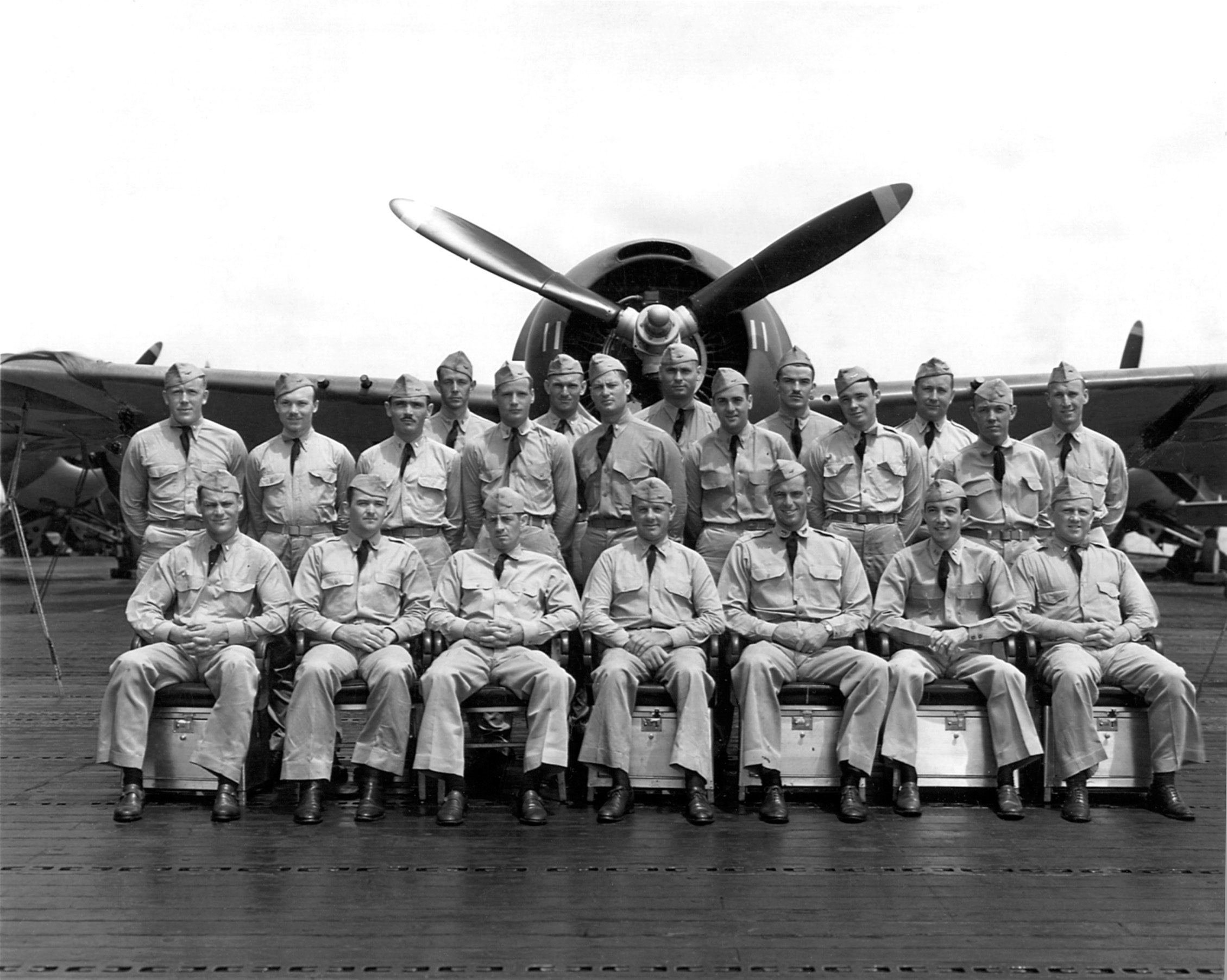
Meanwhile, aboard 6-S-9, Roberts and Jones had also noticed the tracers streaming upward but were able to land at Hickam even though their left wing was streaming gasoline. They stayed there until the second wave of Japanese attackers arrived. Jones fired his rear-mounted guns until all his ammunition was expended.
Young Remembered That the Cascade of Bullets was Instantaneous with His Realization that Pearl was Under Attack
Lieutenant Commander Howard L. “Brigham” Young, commander of the Enterprise air group, was flying with Lt. Cmdr. Bromfield B. Nichols, one of Halsey’s tactical officers, in the gunner’s seat. Young’s wingman was 6-S-2 piloted by Ensign P. L. Teaff with a gunner by the name of Jinks. When they neared Barbers Point, they too saw a large column of “Army” planes and gave them a wide berth, continuing toward Ford Island.
Teaff was above and behind Young, watching attentively as one of the Japanese planes winged over and attacked. Although he saw the fighters approaching from behind, he made no effort to maneuver. At a range of 75 yards, one of them opened fire. Teaff pulled to the right, allowing Jinks to get off a short burst as the plane passed them by and concentrated on Young. Neither Teaff nor Jinks was hit, but their plane was “liberally sprinkled” with slugs. Teaff even noted that a few were shot at such an angle that some of them glanced off his wings.
Closing on Young, the Japanese pilot opened fire at close range. Young remembered that the cascade of bullets was instantaneous with his realization that Pearl was under attack. He immediately dove away and zigzagged. Again there was no damage. Two American dive-bombers flying straight and slow had been attacked at close range by a veteran Zero fighter pilot who missed.
Young and Teaff remained together. Since it was obvious they would be fired on no matter what direction they went, they continued toward Ford Island. At about 0835, both planes landed safely. Even though they had their wheels down and flashed recognition signals, they endured heavy antiaircraft fire all the way. Young recalled, “I was under fire until my wheels touched the ground on Ford Island—some of the guns being not more than 50 yards distance from me.”
Even more incredibly, no one was injured, nor was either plane seriously damaged, though Teaff’s took a few .50-caliber slugs in the tail and the hydraulic system was hit. Since the Enterprise was still under radio silence when the men hopped out of their aircraft, the commander of Ford Island, Captain George Shoemaker, rushed to the pilots and shouted, “What the hell goes on here?” Only then was Young able to disclose the location of the Enterprise, the presence of the 18 SBDs, and their mission.
The next planes to make contact apparently were 6-S-4, piloted by Lieutenant Clarence E. Dickinson with gunner William C. Miller, and 6-S-9, piloted by Ensign John R. “Bud” McCarthy with gunner Mitchell Cohn. At about 0825, they were approaching Barbers Point when they saw thick smoke from what turned out to be the stricken battleship USS Arizona. Then they saw splashes in the water. Like the others, Dickinson thought the smoke was from burning cane fields and the splashes were just an Army gunnery drill. The firing was so wild that he thought, “Just wait. Tomorrow the Army will certainly catch hell for it.” Finally, he realized the harbor was covered with antiaircraft blossoms.
Dickinson immediately ordered his wingman to close formation and climb to 4,000 feet, where McCarthy was attacked by two fighters. Together, the SBDs dove back down to 1,000 feet where four more fighters attacked. Looking aft, Dickinson saw McCarthy’s plane catch fire “from the right side of the engine and the right main tank. It lost speed and dropped about 50 yards astern and to the left. I could see it still attempting to fight as it slowly circled to the left losing altitude.”
The plane lost speed and crashed. Dickinson saw only one parachute. McCarthy had managed to get out, although he broke his leg, presumably after hitting the rear stabilizer on the way out. Cohn did not make it.
Meanwhile, Dickinson was still under attack by as many as five Zeroes. As he dove, his gunner returned fire and said, “Mr. Dickinson, I have been hit once, but I think I have got one of those sons of bitches.” When Dickinson glanced rearward, he saw a Japanese plane on fire losing altitude and speed. It was the first Navy aerial victory of the war. A few minutes later, Miller reported that all six cans of his ammunition were gone … and then he screamed.
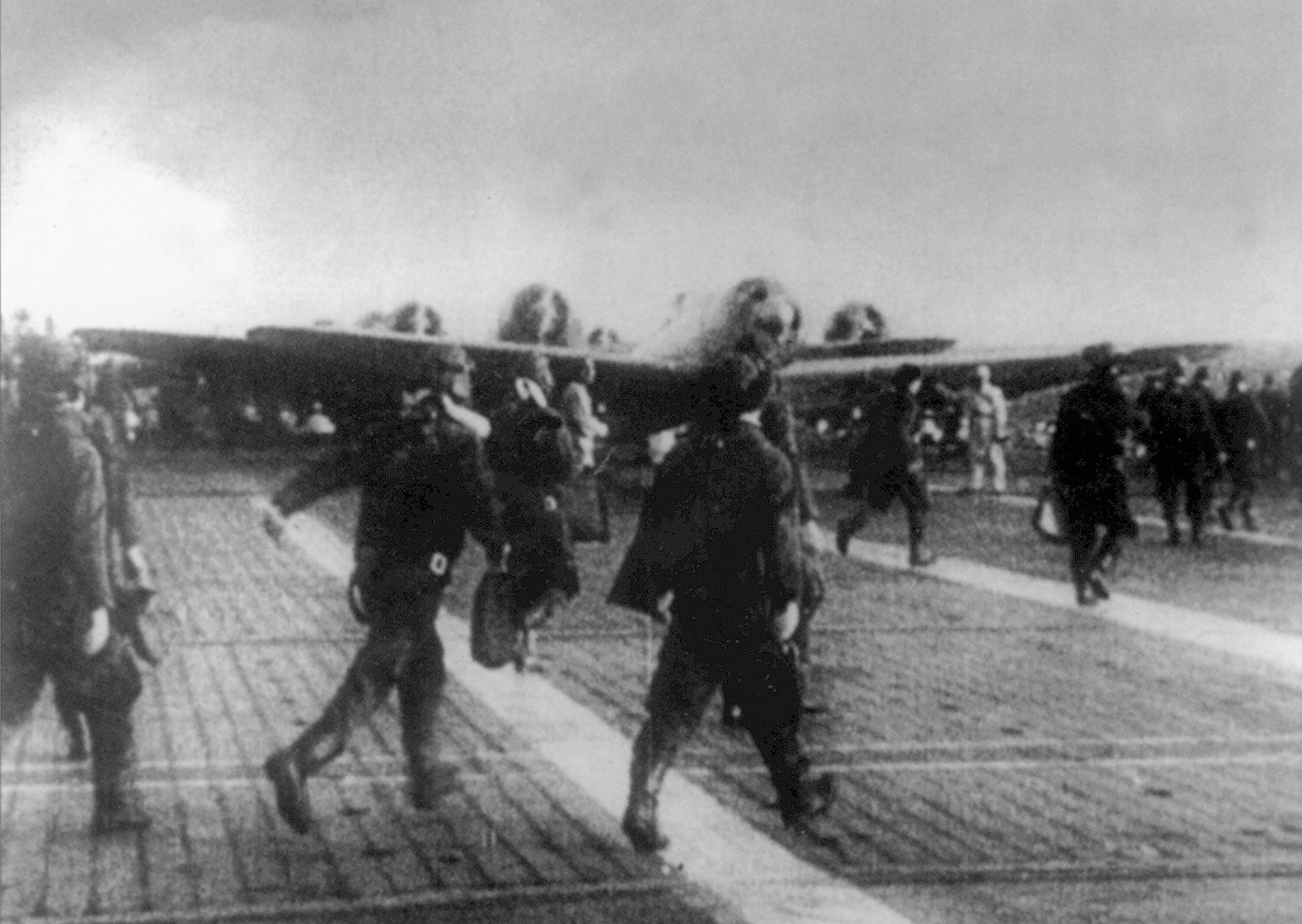
As the attacking fighter sped past, Dickinson was able to get in two short bursts from his forward guns, but they had little effect. The attacks continued, and he could only watch helplessly as holes began appearing in his wings. Amazingly, he was not hurt, but his ankle was nicked and there were horizontal cuts in his sock. Soon, his left fuel tank was on fire, he lost all control of his plane, and it began to slip to the right. As it started to spin, Dickinson called for Miller to bail out and then jumped at an altitude of 800 feet. He landed alone and unhurt near Ewa Field.
On the ground, Dickinson was able to catch a ride with an elderly couple in a blue sedan who had not quite realized what was going on. They were going to a picnic and did not want to be late. How unfortunate that the military was causing all this fuss. They finally figured things out when a van just ahead of them was rocked by machine-gun and cannon fire. Moments later, it careened off the road on flat tires, Coming to rest covered in dust and peppered with holes.
Confusion, Panic, and Friendly Fire
The couple dropped Dickinson off at Ewa Field where the sentries told him that some Japanese planes were so low they had thumbed their noses at them as they flew by. Another had clasped his hands together over his head in a victory salute. Be that as it may, Dickinson kept going until he got to Pearl Harbor just in time to see the destroyer USS Shaw go up in a ball of flame. A bomb had penetrated the forward magazine and blown off the ship’s bow.
Lieutenant Commander Halstead L. Hopping was piloting 6-S-1 with a gunner named Thomas, while 6-S-3 was piloted by Ensign J.H.L. Vogt with Sidney Pierce as gunner. While on their patrol, Hopping spotted a ship and left Vogt’s company to investigate. When he returned, he was unable to locate 6-S-3 and continued alone. Landing at Ford Island during the dive-bombing attack, 6-S-1 endured heavy friendly antiaircraft fire. Miraculously, his aircraft was only hit once, a bullet in a battery that did not have any effect.
Vogt, having been left by Hopping, continued alone and ran into a flight of Zeros probably led by Lieutenant Yoshio Shiga from the aircraft carrier Kaga. Eyewitnesses near Ewa Field stated that Vogt’s SBD attacked and clung tenaciously to the tail of a Zero, firing constantly until it pulled up and stalled, causing Vogt to slam into it. The two planes fell entangled to the earth. Some say the action was a simple collision, but others remember it as a twisting dogfight. This is a particularly interesting version of a combat sequence, given the mismatch of the relatively slow SBD and the highly maneuverable Zero.
Ensign Carlton T. “Misty” Fogg was piloting 6-S-11 with a gunner named Dennis, and 6-S-8 was piloted by Ensign E.J. Dobson with a gunner by the name of Hoss. They tried to land at Ford Island, but realizing it was under attack, they returned to Barbers Point and joined up with the other circling Enterprise planes for about 45 minutes. At that time, they all tried to land at Ford but were met with such heavy antiaircraft fire that the formation scattered. Fogg turned back, while Dobson actually made it in. Having landed at Ewa, Fogg kept watch with a field phone from inside the metal scoop of a steam shovel during the second attack wave.
Dauntless 6-S-7, piloted by H.D. Hilton with a gunner named Leaming, and 6-B-5, piloted by Ensign E.J. Kroeger with a gunner by the name of Chapman, arrived off Barbers Point at about 0845. They could not see the attack at Pearl but did notice two large groups of aircraft. They circled with the others for a while and then tried to land at Ewa Field where “definite evidence of the attack was first noted.” They were immediately waved off for fear they would draw strafing Japanese planes, and the SBDs headed for Ford where they met heavy antiaircraft fire. Both planes broke off and returned to Ewa where they were refueled and loaded with 500-pound bombs.
Dauntlesses 6-S-10, piloted by Lieutenant Gallaher with a gunner named Merritt, and 6-S-5, piloted by Ensign W.P. West with a gunner named Hansen, also passed over Kauai as they approached Oahu from the northwest. Ensign West noticed approximately 10 monoplanes marked in bright colors but mistook them for Army observation planes. These Dauntlesses also continued along until they reached Barbers Point and saw what they thought were burning cane fields. Only when they got closer to Pearl did they realize the truth. With the others, they landed at Ewa and then left immediately for Ford Island.
“You Could Read a Newspaper by the Light of the Tracers.”
Enemy planes circled above Barbers Point at 3,000 to 4,000 feet. About 10 miles further out to sea, even more Japanese planes formed up and waited. In all, seven of the Enterprise planes gathered and eventually tried to land at Ewa but were waved off by the ground crew and flew on to Ford Island. The formation which included Gallaher, West, and Dobson actually managed to land, while the others broke off and returned to Ewa where this time they were refueled and rearmed.
By now, the Japanese had retired completely, and at 1030 Hopping took off alone from Ford Island to investigate a report of two Japanese carriers 25 to 40 miles west or southwest of Barbers Point. He returned at 1145. He met with light antiaircraft fire both on takeoff and landing.
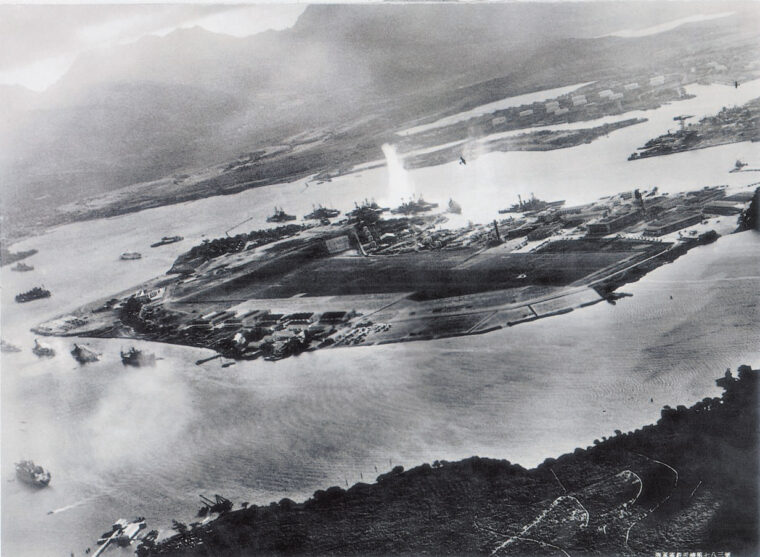
At 1115, Hilton, Kroeger, and Weber were ordered to accompany an attack flight of Army bombers from Hickam Field. After receiving some antiaircraft fire at takeoff, the three approached Hickam and found no Army bombers to join with, so they returned to Ford Island.
Other sightings abounded. Both the heavy cruisers Minneapolis and Indianapolis, operating separately, were identified as Japanese carriers. Even the Enterprise herself was rightly identified as a carrier, but wrongly attacked. Army Captain Brooke E. Allen, having saved his B-17 from destruction by taxiing it away from the flight line at Hickam, rose alone into the afternoon sky with orders to search to the southwest. There he found “this beautiful carrier” that opened fire on him. Accordingly, he began a bombing run but, “God had a hand on me, because I knew this was not a Jap carrier.”
Thirteen Enterprise planes were launched from their new land base at 1210: nine planes in three flights to search to the north and four planes to search south. The northern search consisted of Hopping, Teaff, and Kroeger; Gallaher, West, and Dobson; Dickinson, Hilton, and Weber searching an area from 330 to 030 degrees and extending 200 miles north of Oahu. No contacts were made, and the flight returned at 1545.
A search patrol from the Enterprise to the south included Ensign C.R. “Bucky” Walters and Ensign Ben Troemel of Bomb Squadron Six. Walters made contact with what he described as a Soryu-class Japanese carrier. As he investigated the ship, he “found an enemy plane closing on my starboard quarter. The plane was a silver twin-engine monoplane carrying two vertical stabilizers. Attack was evaded by applying full throttle and diving to within 25 feet of the water.” He then spotted a Japanese cruiser of the Jintsu class, which he followed for some time until ordered to return. No Japanese ships or aircraft were in that area, and what he actually saw is unknown.
The two of them were unable to return to the ship and headed for Kauai and then on to Oahu to land at Kaneohe Naval Air Station after dark. The field had been badly shot up in the morning and was now blacked out. Walters and Troemel managed to land successfully but had to maneuver violently to avoid hitting all the vehicles that had been deliberately parked on the runway. Troemel came to rest directly beneath a boom crane, while Walters almost ran into a cement mixer. The base commander explained that he had put the vehicles there to prevent the Japanese from landing and was a little upset that the two SBDs had managed to do so.
It was not until 1700 that a viable attack force was organized by the Enterprise. Eighteen Douglas TBD Devastator torpedo bombers; the remaining six Dauntlesses of Bombing Six, which were fitted with smoke generators to mask the torpedo planes; and an escort of six Wildcats were launched to attack a force supposedly 100 miles southeast of the Enterprise and her escort vessels, which were still west of Hawaii. Nothing was located, and the Devastators and SBDs returned to the Enterprise.
By this time it was dark, and the Enterprise did not turn on landing lights. Instead, the Wildcats were ordered to land at Pearl Harbor. Although both the Army and Navy had been informed several times about the six approaching Wildcats, the night sky tragically filled with tracers.
One sailor noted, “ Everything in Pearl Harbor opened up on them. They didn’t have a ghost of a chance” Another witness stated, “You could read a newspaper by the light of the tracers.”
When the guns opened up, one of the Wildcats radioed, “What the hell is going on down there?” To which the tower replied succinctly, “Turn off your lights and beat it.”
Wildcat pilot Ensign James Daniels tried a novel defense when the firing started. Upon seeing the tracers, he headed his plane directly toward the antiaircraft gunners, hoping that the glare of his landing lights would momentarily blind them. It worked. The firing became erratic, and Daniels was able to circle around, turn off his lights, and land on Ford Island in the dark. However, Ensign Gayle Herman took a 5-inch round in his engine. Miraculously unhurt, he bailed out over a golf course. Ensign David Flynn kept out of range until his plane ran out of gas and then parachuted into a cane field. Ensign Herbert Menges, Lieutenant Francis Hebel, and Lieutenant Eric Allen, Jr., all died. Allen was shot out of his parachute.
As December 7, 1941, passed into history, the consequences and mistakes of the day would be evaluated many times, but the men of Scouting and Bombing Squadron Six had reason to be proud of their role in the days’ events. They reacted well to a confusing situation, fought hard, and then persevered under heavy fire, most of it friendly.
Richard L. Hayes is a freelance writer from Chicago. He has been published in numerous military history magazines.
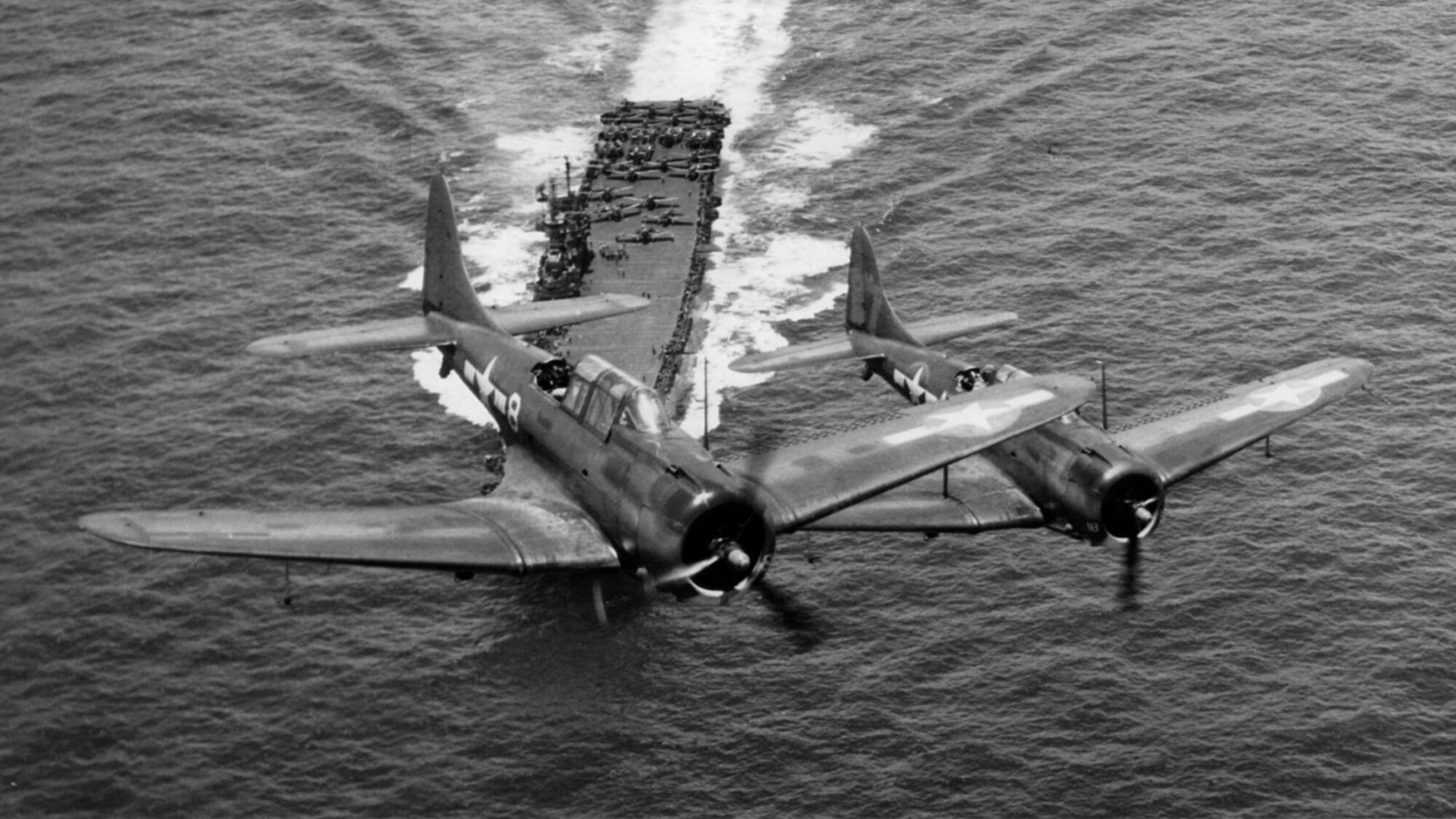
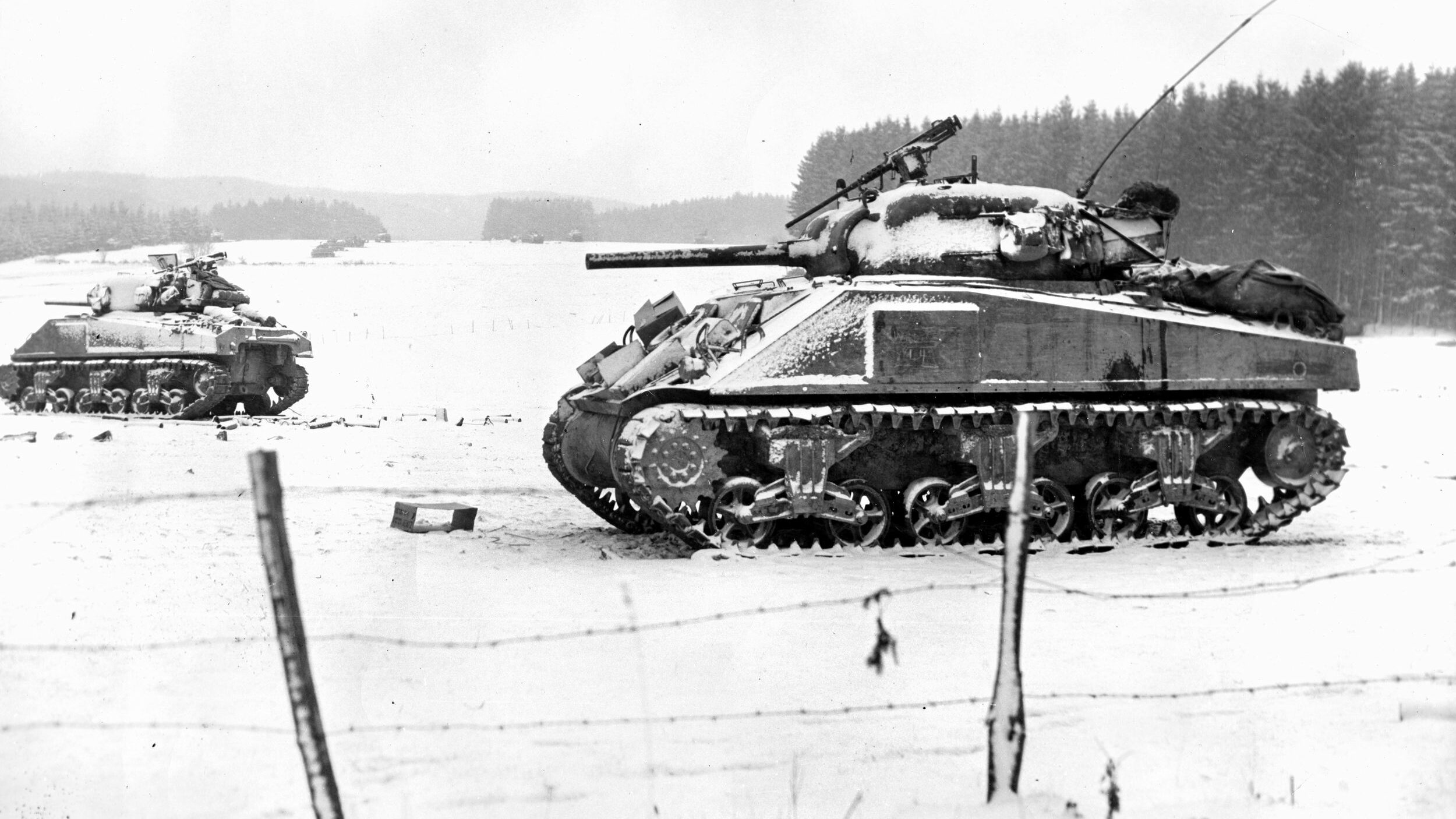
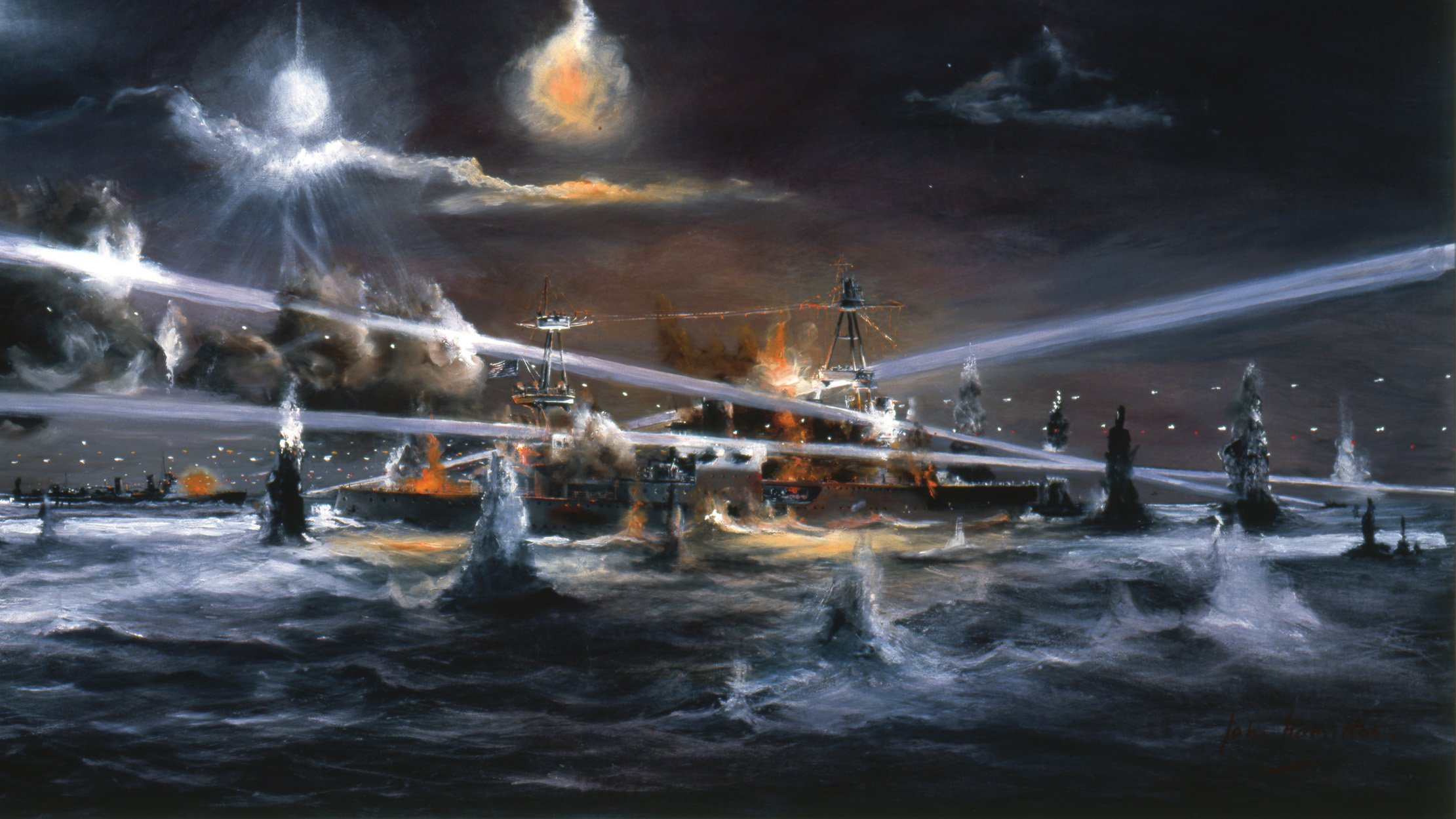
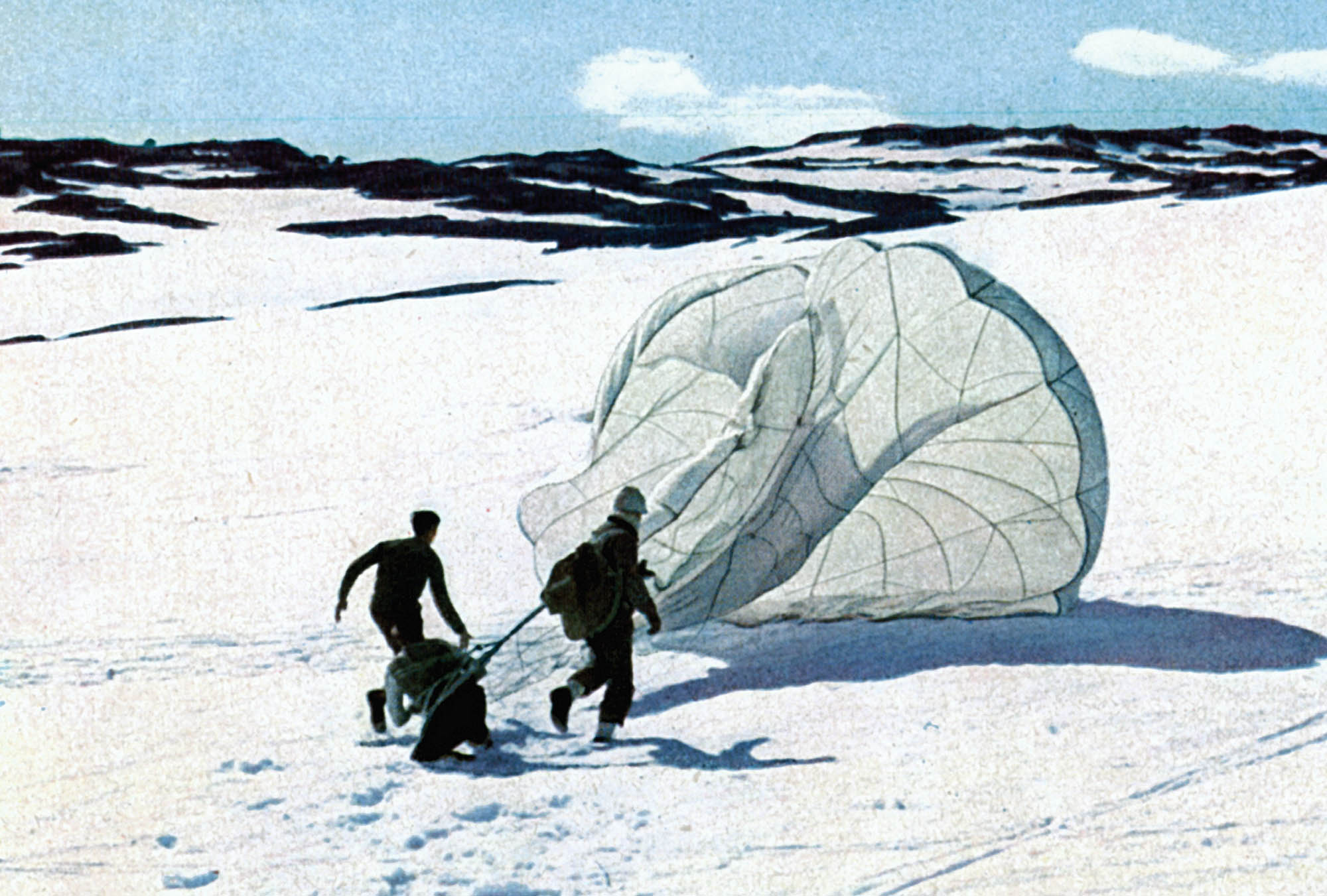
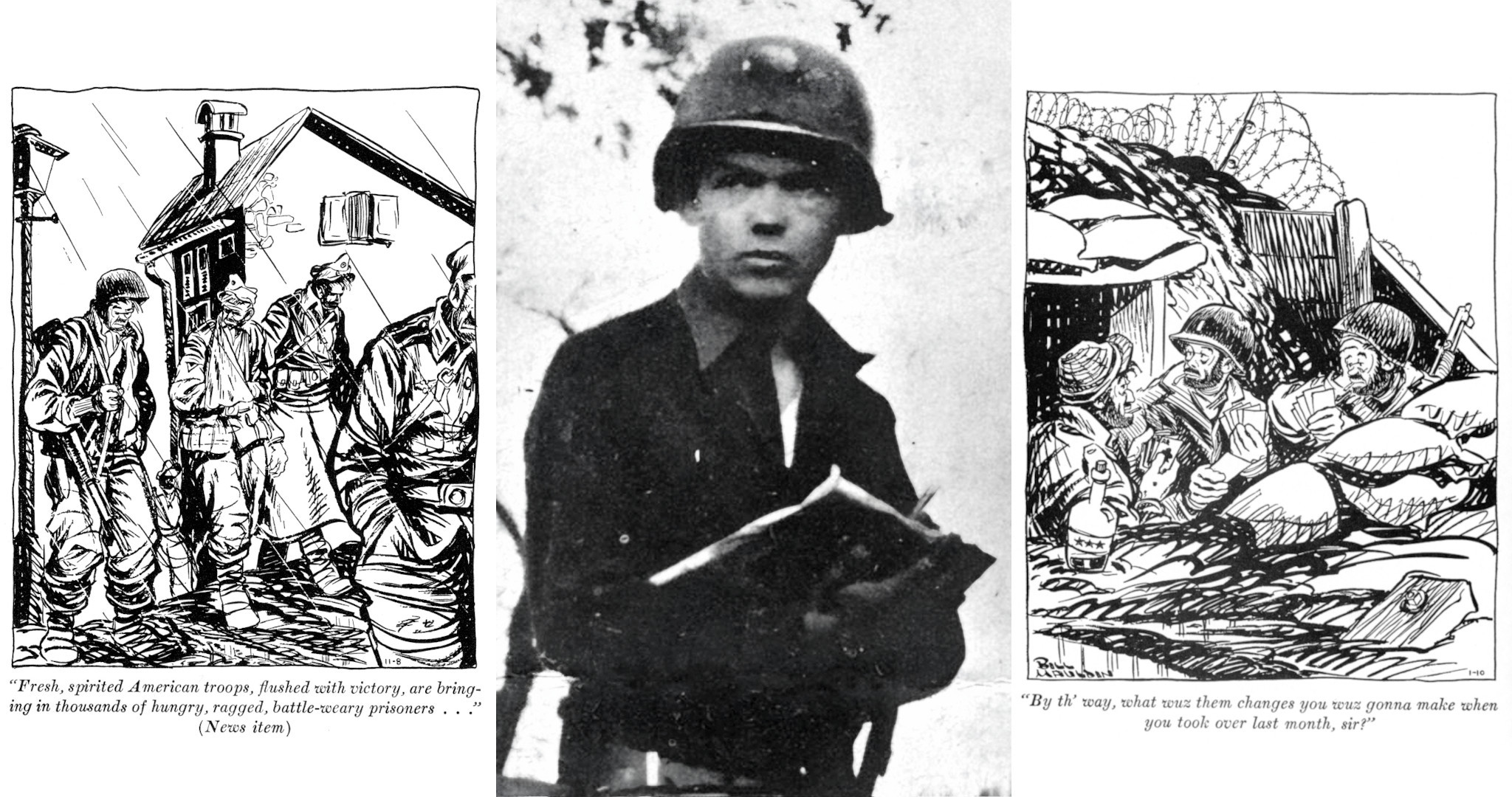


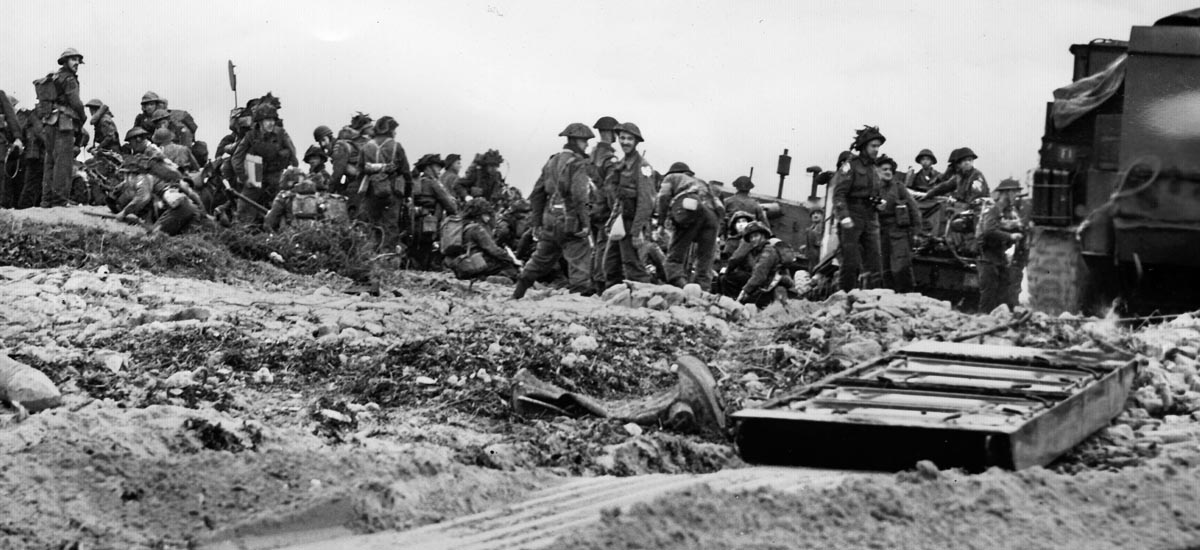
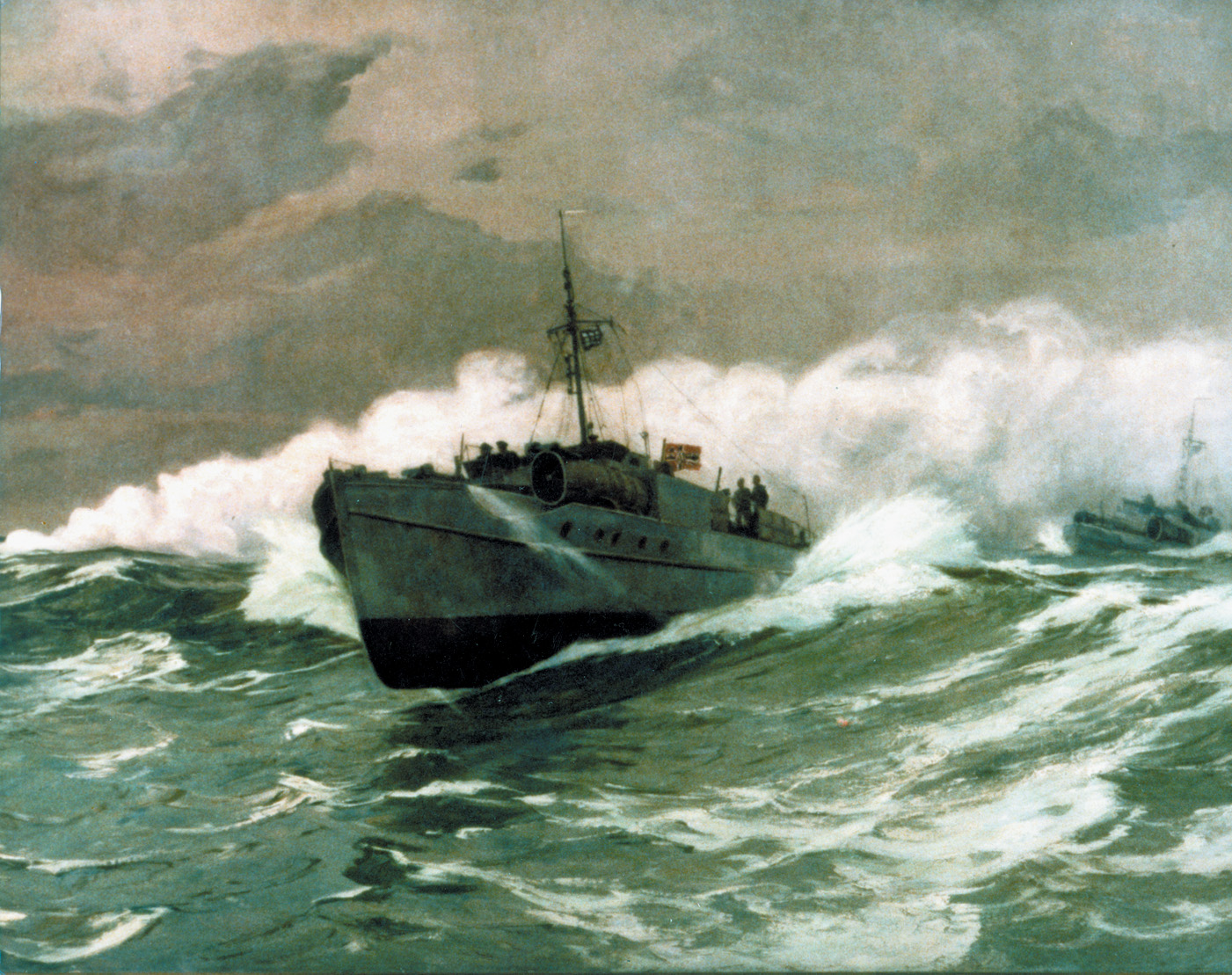
Join The Conversation
Comments
View All Comments